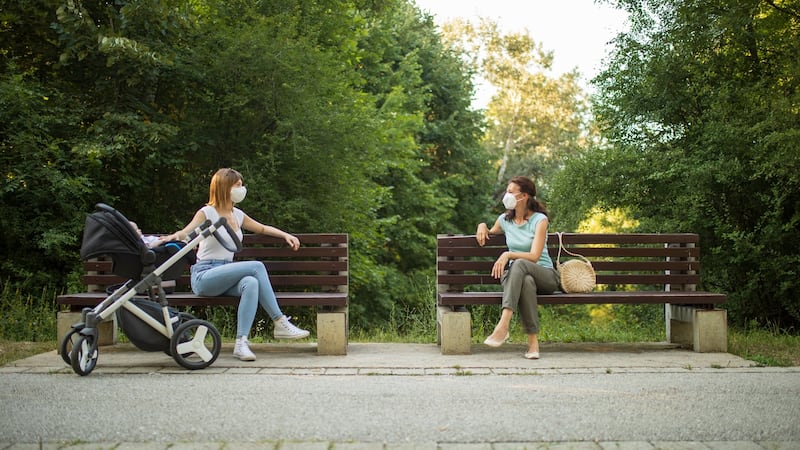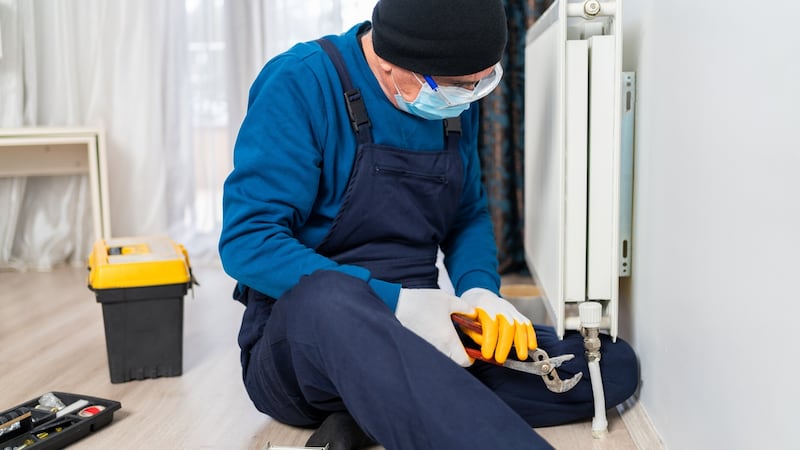As the numbers of people who test positive for Covid-19 begins to decline from the third and so far most severe wave of coronavirus infections in Ireland, it may seem like we can begin to relax.
However, public health officials have repeatedly pointed out that we shouldn’t let down our guard: that community-wide transmission of the Covid-19 virus – particularly with at least one of the new more virulent strains now widespread in Ireland – can rise again very quickly once people move about more and let go of the stringent hygiene measures (mask-wearing, coughing and sneezing etiquette, hand-washing and keeping 2 metres from anyone who is not in your immediate family).
Taoiseach Micheál Martin’s advice to “hold firm and stick to the basics” when he extended Level 5 restrictions until March 5th still applies. Yet, we all know that it is in our nature to be social and interact with neighbours, family and friends.
Here we look at five potential scenarios in which you might find yourself, with suggestions on how best to act.

1) When a careful friend invites you over
What are the rules? Until at least March 5th, we remain in Level 5 restrictions to prevent the transmission of Covid-19. This means that we shouldn't have any visitors into our homes or gardens, and we shouldn't visit other people's homes – unless that person/family unit is the one other household that we are in contact with regularly as part of the so-called social bubble allowed in certain situations.
What is the science? Scientists advise the Irish Government on what level of restrictions to impose based on mathematical modelling of the spread of Covid-19 at any given time. Prof Philip Nolan, the chair of the Irish Epidemiological Modelling Advisory Group on Covid-19, said earlier this week that we still have weeks to go "to suppress the virus and get the level of infection and case numbers as low as possible".
How do you say no? Well, it's quite simple really. Level 5 restrictions don't permit visits to other people's houses and you don't want to break these rules.
If you absolutely must bend the rules, how should you behave? Abide by all the public health measures to prevent the spread of Covid-19, including wearing a mask and remaining 2 metres apart. See the person outdoors if possible or limit your indoor visit to less than 15 minutes, which is the time originally defined as the safe window in which the virus is less likely to be spread.

2) When a vulnerable person asks for your help
What are the rules? Public health guidelines are such that the over-70s and medically vulnerable people can see members of one other household on a regular basis. This means that if you are not that household, you are not advised to be in close contact with a vulnerable person.
What is the science? The over-70s and those with underlying health conditions are at much higher risk of becoming seriously ill or dying from complications arising from Covid-19.
How do you say no? It's a difficult situation, and many of us are aware of the psychological toll the pandemic is having on vulnerable individuals. But remind the person that you are keeping them safe by keeping your distance.
If you absolutely must bend the rules, how should you behave? If you can help without being physically close to the person, do what you can. If, for example, this involves fixing something in their home, abide by all the public health advice and allow a current of air to pass through the house while you are there. Obviously, this means the house will be colder, so ask the older person to remain in another room while you complete the job.

3) When someone calls to your house
What are the rules? As per previous replies, we are currently still at Level 5 restrictions, which means that no one can visit your home or garden.
What is the science? As levels of Covid-19 remain relatively high in the community (still higher than peak numbers in October), public health officials advise us all to stay in our own homes except when doing essential shopping and taking exercise outdoors. This advice is given to prevent case numbers rising again.
How do you say no? We are all pretty adept at turning away door-to-door salespeople, none of whom have been calling for the past year. So politely explain that you are following the Level 5 restrictions and don't want to put yourself or anyone else at risk of catching Covid-19. Then smile and close the door.
If you absolutely must bend the rules, how should you behave? It shouldn't be too difficult to have a short chat – wearing a mask to emphasise your concern about the spread of the virus – while the person remains outside and you remain at your door. Many people have been having these short chats with neighbours throughout the pandemic to help everyone keep psychologically well while living what can be very isolated lives.
4) When a stranger gets too close in public
What are the rules? You would need to have been asleep for the last year not to know that we are all advised to keep 2 metres apart (about two arm lengths) when standing in queues either inside or outside shops, pharmacies, post offices or banks. There are stickers on floors and markings on the street to remind everyone of these public health measures to reduce the spread of Covid-19. Still, people do forget or drop their guard.
What is the science? Scientists got into a lot of debate early on in the Covid-19 pandemic about what exactly constituted the necessary social-distancing to prevent the spread of Covid-19, and some countries have slightly different rules. In Ireland, the public health advice is to stay at least 2 metres away from other people outside. The World Health Organisation advises people to stay at least 1 metre from each other and to avoid spending time in crowded places or in groups.
How do you say no? Earlier in the pandemic, psychologist Maureen Gaffney advised people not to confront someone standing too close to them as the chances of getting an aggressive reply are increased in these circumstances. "Now is not the time to assert your rights, now is the time to protect yourself and other people ... If someone is crowding you from behind, step out to the side of the queue," she advised.
If you absolutely must bend the rules, how should you behave? There really shouldn't be any bending of the rules in this case as you have no way of assessing the risk of catching Covid-19 from a stranger that you are in close contact with.
5) When someone wants a lift in my car
What are the rules? There hasn't been much attention paid to this particular issue, but the restrictions advise people to remain within their households or social bubbles. So giving someone a lift in your car doesn't comply with these guidelines.
What is the science? Scientists have shown that coronavirus particles spread most easily in crowded confined warm spaces, and a car full of people with the heating on and windows closed is a perfect example of such a space. More recent studies have also found that smaller coronavirus particles (known as aerosols) can remain in the air for longer than larger droplets emitted from an infected person by coughing, sneezing or talking.
How do you say no? Giving someone a lift in your car without knowing whether you or the passenger has Covid-19 is a potentially risky scenario so it's best to politely refuse.
If you absolutely must bend the rules, how should you behave? If you feel compelled to give the person a lift, then ensure that both of you wear a face covering. The driver and passenger should also sit as far away from each other as possible in the car, so your passenger should sit in the back seat diagonally across from you. A recent study on air ventilation in cars found that creating a cross-current of air by opening the windows (half way down) diagonally from the front passenger seat window to the back seat window behind the driver will reduce the risk of spread of infection within the car.











